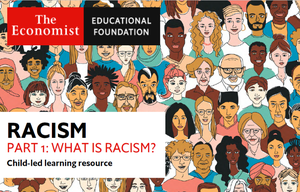
Why this topic matters
The Black Lives Matter movement was formed in 2013 to address institutional racism and violence towards black people. It is now a global movement, and in 2020 it became increasingly prevalent, meaning that many young people will have heard about it.
Exploring Black Lives Matter in school ensures that students have a good understanding of the movement and how it relates to current and historic racism, institutional racism, and why racism must end.
Connections to the curriculum
- English literature: choose a class reader written by a black author and/or with a black protagonist.
- English language: look at the news relating to the Black Lives Matter movement to teach about the movement and the vocabulary around this topic such as 'white privilege', 'anti-racism' and 'discrimination'.
- Science and Maths: draw attention to black scientists and mathematicians who have contributed to the topics which you are teaching.
- History: highlight the roles that people of colour played in all of the historical events that are taught in the curriculum, not just in Black History Month.
- Art: share examples and materials from a varied range of perspectives from different cultures, classes and countries around the world.
How to approach it
Use analogies:
Analogies are a really useful way to explain why ‘Black Lives Matter’ doesn’t mean ‘Only Black Lives Matter’. For example, imagine you fall over and cut your hand. You would want to tell someone “my hand is hurting”, so that you can get treatment. By telling someone your hand is hurting you are not saying that your hand is more important than your feet, or that no other part of your body experiences pain, just that this is the biggest issue you are experiencing right now that you need help with.
Build empathy:
Inviting your students to put themselves in other people’s shoes helps to make the stories of racism you explore memorable and more relatable. This is especially important for students who may have never experienced racism, either directly or indirectly. For example, ask you students how they would feel if they, or a member of their family, were treated this way. You can also ask if any of your students have experienced anything similar and may be willing to share this. Be considerate and aware that some students may prefer not to share their experiences.
Empower students:
Learning about racial inequalities, violence and prejudice can be a shocking and disempowering experience, so it is important to also teach students about actions they can take to address racism. It is important that the anti-racist values you teach are also demonstrated by the school as an institution, and this can even be a point of action that students can get involved in.
Broaden perspectives:
Many teachers are starting to ‘decolonise’ their curriculum - teaching a wider variety and depth of perspectives and cultures, and exploring topics such as unconscious bias. By finding ways to introduce other viewpoints and topics from outside of the traditional canon, you can encourage values such as empathy, connection and respect. Allowing your students to question why things are the way they are is an important component of critical thinking and can empower them to take positive action to make the world a more compassionate place.




